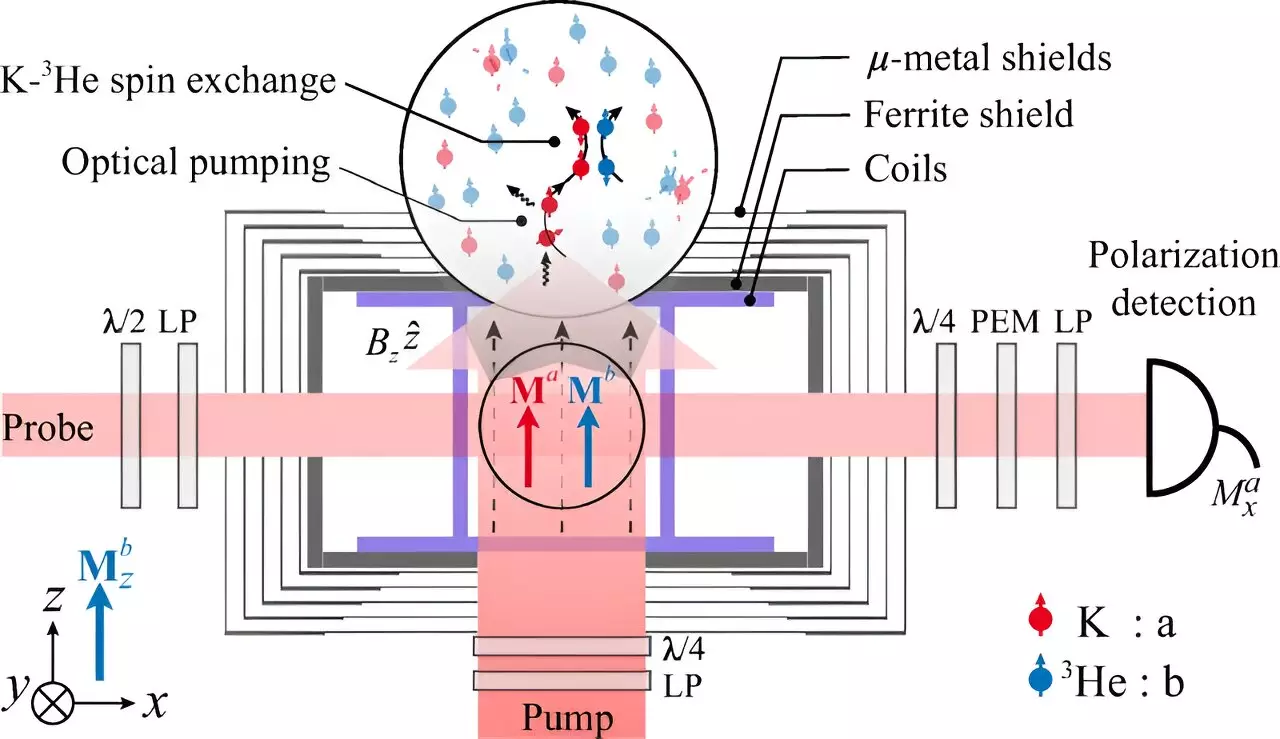Recent advancements in experimental physics have sparked renewed interest in the manipulation of atomic spins, particularly in the context of measuring extremely weak magnetic fields. A team of researchers, under the leadership of Professor Peng Xinhua and Associate Professor Jiang Min from the University of Science and Technology of China (USTC), has authored a groundbreaking study published in Physical Review Letters. This work details a novel approach to suppressing magnetic noise interference through the Fano resonance effect, leading to potential breakthroughs in the study of exotic spin interactions and dark matter detection.
The phenomena surrounding Fano resonance arise from the intricate interplay of quantum mechanics and atomic spin states. Understanding these interactions has become crucial, particularly as scientists explore realms beyond the standard particle physics model. New insights into spin-dark matter particles and potential new forces demand more reliable methods for detecting weak magnetic signals, as these signals can often be overshadowed by magnetic noise.
Historically, precision measurement techniques have matured, with the scientific community increasingly focused on exotic spin interactions. Recent decades have witnessed heightened interest in interactions previously thought to be negligible, yet they may hold the key to understanding fundamental physics and the universe’s mysteries. However, measuring weak magnetic fields poses significant challenges due to the obstinate backdrop of noise that often drowns out the signals of interest.
Traditional atomic comagnetometers, which utilize dual atomic spins to counterbalance drift and fluctuations, have their limitations, particularly when dealing with low-frequency magnetic noise. With that said, their inability to perform adequately at higher frequencies has created glaring gaps in research needing to explore hydra-headed phenomena like spin-dark matter interactions and other exotic forces.
The research team innovatively tackled the issues of magnetic noise by introducing a suppression method that relies on self-compensation effects of magnetic noise through a mixed gas system of potassium (K) and helium-3 (3He). Lasers polarized the K atoms, which then served as a medium for influencing the nuclear spins of 3He atoms via spin-exchange collisions. Defining bias magnetic fields meticulously and ensuring they are oppositely directed to the magnetic fields generated by the 3He enabled the nuclear spins to track external low-frequency magnetic noise effectively.
A significant finding of the study emerged when researchers varied the magnitude of these bias fields and adjusted the angle in relation to specific higher-frequency magnetic noise. This careful manipulation led to the demonstration that higher frequency magnetic noise could effectively be suppressed, a promising development for experimental setups previously hindered by noise interference.
Moreover, the team elucidated an elegant theoretical framework for their experimental observations through a lens of Fabry-Perot resonance interference cancellation, providing a rich context for their findings. With experimental suppression exceeding two orders of magnitude across a frequency spectrum up to 200Hz, the research offers hope for significantly enhanced sensitivity in the detection of pseudomagnetic fields—projected to improve thousands of times the current limits.
The implications of this research extend far beyond mere laboratory curiosity. Advancements in magnetic noise suppression techniques could revolutionize areas such as dark matter detection, elucidating interactions otherwise obscured by background noise. The ability to distinguish and identify weak magnetic signals with greater clarity augments the experiments probing fundamental physics, challenging existing paradigms.
As the field continues to evolve, further research is warranted to refine these noise suppression methods and investigate their applicability in varying experimental contexts. The roadmap laid out by Professor Peng and his team opens avenues for future explorations into new forms of matter and interactions, potentially addressing profound questions about the universe’s composition and behavior.
The discovery of Fano resonance interference in mixed atomic spin systems not only enhances our ability to reduce magnetic noise but also beckons a new dawn in the exploration of exotic spin interactions. This elegant blend of theory and experimental validation is indicative of a transformative period in fundamental physics research, promising exciting developments on the horizon.

